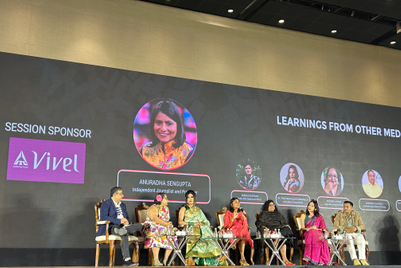
In the 1990s, William M Muir, a professor of Animal Sciences at the Pardeu University, studied chickens. He was fascinated by the topic of productivity and wanted to know what could make his chickens more productive, so he devised a beautiful experiment.
He selected two groups of nine chickens each to breed, one an average flock chosen randomly from the best cages and the second a Superflock, i.e. the most productive hens across cages were selected to breed. Both these groups were now left alone for six generations.
After six generations had passed, what did he find?
The first group, the average group, was doing just fine. All nine hens were alive and fully feathered. Egg productivity increased 160% in only a few generations.
What about the second group - Superflock? Only three hens were left because the other six were murdered, and the survivors plucked each other in incessant attacks. Even though the best egg layers had been selected every generation, egg productivity plummeted. It happened because the most productive hen in each cage was the biggest bully, who achieved her productivity by suppressing the productivity of the other hens.
Muir’s experiments reveal a tremendous naiveté in the idea that creating a good society or team is merely a matter of selecting the 'best' individuals. A good organisation or team requires members to work together to create what cannot be produced alone or at least to refrain from exploiting each other.
Most organisations and teams, even today, are run on the super chicken model. We believe success is achieved by picking the superstars, but the result is the same as in William Muir’s experiment: aggression, dysfunction, and waste. We undervalue qualities of collaboration, team player and empathy in new hires, which are the essence of fostering a thriving and high-performing team.
“What matters is the mortar, not the bricks. Social capital is what makes
companies robust” - Margaret Heffernan
Well, it means what happens between people really counts because ideas can flow and grow in groups that are highly attuned and sensitive to each other. A culture of helpfulness is central to success. Now helpfulness sounds really anaemic, but it’s core to successful teams and routinely outperforms individual intelligence.
I also believe that Muir’s experiments unknowingly stepped on the early notions of diversity, equity and inclusivity. See, the most successful teams have always been the ones that score higher on empathy, not on IQ, and Diversity plays a pivotal role in fostering empathy.
One of the first articles published by McKinsey with data on diversity shows that ethnically diverse companies are 35% more likely to outperform those in the bottom quintile; this is 2X higher than even gender-diverse companies. (See below). The results varied by country and industry. For example, in the US, ethnic/racial diversity has a stronger impact on financial performance than gender diversity. In the UK, increased gender diversity on the executive team corresponded to the highest performance uplift.
It is likely that the average flock of chickens, being randomly selected, represented an ethnically diverse set which would explain the productivity increase even for an average group. Ethnic diversity is hard to measure in organisations, which is probably why we don’t pay enough attention to this facet of diversity.

Given these findings, organisations must prioritise attaining both ethnic diversity and gender diversity during recruitment. It is crucial to foster an inclusive environment that embraces diversity in all its forms. By doing so, companies can unlock the full potential of their teams, leading to improved performance and success.
The lessons from William Muir's chicken experiment also serve as a profound reminder that a thriving and high-performing team is not built on the dominance of a few individuals but on the collective strength of a diverse and empathetic group.
Over the past fifteen years, the author has consistently led and managed teams deeply committed to embedding ethnic and gender diversity. Through this experience, the author has witnessed firsthand how diversity contributes significantly to cultivating stable, hard-working, energetic, and ultimately successful teams.
(The author is country service line leader, executive director, Innovation, Ipsos India)



.jpg&h=334&w=500&q=100&v=20250320&c=1)


.jpg&h=334&w=500&q=100&v=20250320&c=1)



.jpg&h=334&w=500&q=100&v=20250320&c=1)


.jpg&h=268&w=401&q=100&v=20250320&c=1)

.jpg&h=268&w=401&q=100&v=20250320&c=1)

.jpg&h=268&w=401&q=100&v=20250320&c=1)
.jpg&h=268&w=401&q=100&v=20250320&c=1)

